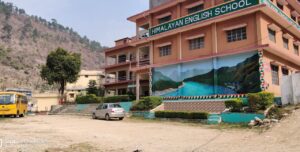
Class IX
CHEMISTRY
BIOLOGY
Class X
CHEMISTRY
BIOLOGY
CBSE Class 11 Chemistry Lab Manual
CBSE Class 12 Chemistry Lab Manual
Class 11th Physics
(i) to measure diameter of a small spherical/cylindrical body.
(ii) to measure dimensions of a given regular body of known mass and hence find its
density.
(iii) to measure internal diameter and depth of a given beaker/calorimeter and hence
find its volume.
(i) to measure diameter of a given wire,
(ii) to measure thickness of a given sheet
(iii) to measure volume of an irregular lamina
second’s pendulum using appropriate graph.
find co-efficient of friction between a block and a horizontal surface.
gravitational pull of the earth and study its relationship with the angle of inclination by
plotting graph between force and sin.⊘
Activities
1 . To make a paper scale of given least count, e.g. 0.2cm, 0.5cm.
double inclined plane).
square of amplitude and time.
Class 11 Chemistry
PRACTICALS SYLLABUS
following: Alum, copper sulphate, Benzoic acid.
(a) Anyone of the following experiments:
Determination of pH of some solutions obtained from fruit juices, varied
concentrations of acids. ,bases and salts using pH paper or universal indicator.
Comparing the pH of solutions of strong and weak acid of same concentration.
Study the pH change in the titration of a strong base using universal indicator.
(b) Study of pH change by common-ion effect in case of weak acids and weak bases.
One of the following experiments:
(a) Study the shift in equilibrium between ferric ions and thiocyanate ions by increasing/
decreasing the concentration of either ions.
(b) Study the shift in equilibrium between [Co(H2O)6]2+ and chloride ions by changing
the concentration of either of the ions.
Using a chemical balance.
Preparation of standard solution of oxalic acid.
Determination of strength of a given solution of sodium hydroxide by titrating it
against standard solution of oxalic acid.
Preparation of standard solution of sodium carbonate.
Determination of strength of a given solution of hydrochloric acid by titrating it
against standard sodium carbonate solution.
Determination of one anion and one cation in a given salt
Cations– Pb2+, Cu2+, As3+ A13+ Fe3 + Mn2+, Ni2+, Zn2+, Co2+ Ca2+, Sr2+, Ba 2 +, Mg 2 +, NH4 +
Anions– CO2
3-, S2-, SO2
3-, SO2-4, NO2 –, NO –
3, Cl–, Br–, I– , PO 3-
4, C2O2-
4, CH3COO–
(Note: Insoluble salts excluded)
Class 11 Biology
List of Experiments
following families (Solanaceae, Fabaceae and Liliaceae) Types of root (tap or adventitious),
stem (herbaceous/woody) leaf arrangement/shapes/venation/simple or compound).
and animal materials.
Rhizopus, Mushroom, Yeast, Liverwort, Moss, Fern, Pines, one monocotyledon and one
dicotyledon and one lichen.
Leech, Earthworm, Prawn, Silkworm, Honeybee, Snail, Starfish, Shark, Rohu, Frog, Lizard,
Pigeon and Rabbit.
18
cells, guard cells, parenchyma, collenchyma, sclerenchyma, xylem, phloem, squamous
epithelium, muscle fibres and mammalian blood smear) through temporary/permanent slides.
slides.
11 . Study of external morphology of earthworm, cockroach and frog through models/ preserved
specimens.
Class 12 physics
SECTION A
Experiments
difference versus current.
specific resistance of its material.
figure of merit.
ammeter and voltmeter of desired range and to verify the same.
Activities
given circuit using multimeter.
fuse and a power source.
50
resistor/rheostat, key, ammeter and voltmeter. Mark the components that are not
connected in proper order and correct the circuit and also the circuit diagram.
SECTION B
Experiments
the focal length.
between l/ u and l/v.
between angle of incidence and angle of deviation.
plane mirror.
down voltage.
out the values of current and voltage gains.
Activities
mixed collection of such items.
pnp type transistors. (iii) see the unidirectional flow of current in case of a diode and
an LED.
(iv) check whether a given electronic component (e.g. diode, transistor or I C) is in
working order.
glass slab.
mirror, on a screen by using a candle and a screen (for different distances of the
candle from the lens/ mirror).
the given set of lenses.
Class 12 Chemistry
Practicals Syllabus
(a) Preparation of one lyophilic and one lyophobic sol.
Lyophilic sol – starch, egg albumin and gum
Lyophobic sol – aluminium hydroxide, ferric hydroxide, arsenous sulphide.
(b) Study of the role of emulsifying agents in stabilizing the emulsions of
different oils.
(a) Effect of concentration and temperature on the rate of reaction between
sodium thiosulphate and hydrochloric acid.
(b) Study of reaction rates of any one of the following:
(i) Reaction of iodide ion with hydrogen peroxide at room temperature
using different concentration of iodide ions.
(ii) Reaction between potassium iodate, KIO3 and sodium sulphite:
(Na2SO3) using starch solution as indicator (clock reaction).
Any one of the following experiments
iii) Determination of enthalpy change during interaction (Hydrogen bond
formation) between acetone and chloroform
concentration of electrolytes (CuSO4 or ZnSO4) at room temperature.
chromatography and determination of Rf values.
cations only (constituents having large difference in Rf values to be provided).
Preparation of any two of the following compounds
iii) p-Nitroacetanilide.
55
Unsaturation, alcoholic, phenolic, aldehydic, ketonic, carboxylic and amino (primary)
groups.
their detection in given food stuffs.
against a standard solution of:
(Students will be required to prepare standard solutions by weighing themselves).
Determination of one cation and one anion in a given salt.
Cations – Pb2+, Cu2+, As3+, Al3+, Fe3+, Mn2+, Zn2+, Co2+, Ni2+, Ca2+, Sr2+, Ba2+, Mg2+,
NH4
+
Anions – CO3
2-, S2-, SO3
2-, SO4
2-, NO2
–, NO3
–, Cl –, Br–, I–, PO4
3-; C2O4
2-, CH3COO–
(Note: Insoluble salts excluded)
PROJECT
Scientific investigations involving laboratory testing and collecting information from other
sources.
A few suggested Projects.
Study of presence of oxalate ions in guava fruit at different stages of ripening.
Study of quantity of casein present in different samples of milk.
Preparation of soybean milk and its comparison with the natural milk with respect
to curd formation, effect of temperature, etc.
Study of the effect of potassium bisulphate as food preservative under various
conditions (temperature, concentration, time etc.) :
Study of digestion of starch by salivary amylase and, effect of pH and temperature
on it.
Comparative study of the rate of fermentation of following materials: wheat flour,
gram flour, potato juice, carrot juice etc.
Extraction of essential oils present in Saunf (aniseed), Ajwain (carum), Illaichi
(cardamom).
Study of common food adulterants in fat, oil, butter, sugar, turmeric powder, chilli
powder and pepper.
Note: Any investigatory project, which involves about 10 periods of work, can be chosen with
the approval of the teacher.
Class12 Biology
List of Experiments
number of chambers.
moisture content, pH and water holding capacity of soil. Correlate with the kinds of
plants found in them.
clarity and presence of any living organisms.
sites.
of salivary amylase on starch.
Study/observation of the following (Spotting)
through permanent slides. (from any mammal)
groups, widow’s peak, colour blindness.
Plasmodium, Ringworm through permanent slide or specimen. Comment on
symptoms of diseases that they cause.
adaptations/morphological.
adaptations/ morphological.
| Chemistry | Biology | ||||||||||
| chapter | Chapter name | chapter | |||||||||
| Class | 1 | Matter in our surrounding | Class | 1 | Fundamental unit of life | ||||||
| IX | 2 | Is matter around us pure | IX | 2 | Tissues | ||||||
| 3 | Atoms and molecules | 3 | Diversity of living organism | ||||||||
| 4 | Structure of the Atom | ||||||||||
| Class | 1 | Chemical Reactions and equation | Class | 1 | Life Processes | ||||||
| X | 2 | Acids Bases and Salts | X | 2 | Control and Coordination | ||||||
| 3 | Metals and non metals | 3 | How do ordanisms Reproduce | ||||||||
| 4 | Carbon & its Compounds | 4 | Heridity & Evolution | ||||||||
| 5 | Periodic classification of elements | ||||||||||
| Chemistry | Biology | ||||||||||
| Part -1 | Class | 1 | The living world | ||||||||
| Class | 1 | Some Basic Concepts Of Chemistry | XI | 2 | Biological Classification | ||||||
| XI | 2 | Structure Of Atom | 3 | Plant Kingdom | |||||||
| 3 | Classification Of Elements & Periodicity in Properties | 4 | Animal Kingdom | ||||||||
| 4 | Chemical Bonding & Molecular Structure | 5 | Morfology in Flowering Plants | ||||||||
| 5 | States Of Matter | 6 | Anatomy of Flowering Plant | ||||||||
| 6 | Thermodynamics | 7 | Structural Organisation in Animals | ||||||||
| 7 | Equilibrium | 8 | Cell the unit of Life | ||||||||
| 9 | Biomolecules | ||||||||||
| Part-2 | 10 | Cell Cycle and cell Division | |||||||||
| 1 | Redux Reactions | 11 | Transport in Plants | ||||||||
| 2 | Hydrogen | 12 | Mineral nutrition | ||||||||
| 3 | The s-Block Elements | 13 | Photosynthesis in Higher Plants | ||||||||
| 4 | The s-Block Elements | 14 | Respiration in Plants | ||||||||
| 5 | Organic Chemistry- Some Basic Principles and Techniques | 15 | Plant Growth and Development | ||||||||
| 6 | Hydrocarbons | 16 | Digestion and Absorption | ||||||||
| 7 | Environmental Chemistry | 17 | Breathing &exchane of life | ||||||||
| 18 | Body Fluids & Circulation | ||||||||||
| 19 | Excretory Products and Eliminaqtion | ||||||||||
| 20 | Locomotion & Movement | ||||||||||
| 21 | Neural Control & Coordination | ||||||||||
| 22 | Chemical Coordination and integration | ||||||||||
| Chemistry | Biology | ||||||||||
| Class | Part-1 | Class | 1 | Reproduction in organism | |||||||
| XII | 1 | The Solid State | XII | 2 | Sexual Reproduction in Floweriung Plants | ||||||
| 2 | Solutions | 3 | Human Reproduction | ||||||||
| 3 | Electrochemistry | 4 | Reproductive Health | ||||||||
| 4 | Chemical Kinetics | 5 | Principle Of Inheritance | ||||||||
| 5 | Surface Chemistry | 6 | Molecular Basis of Inheritance | ||||||||
| 6 | General Principles & Processes Of Isolation Of Elements | 7 | Evolution | ||||||||
| 7 | Coordination Compounds | 8 | Human Healthy and Disease | ||||||||
| 8 | The d- and f-block Elements | 9 | Strategies For Enhansment in FoodProduction | ||||||||
| 9 | Coordination Compounds | 10 | Microbes in Human Welfare | ||||||||
| 11 | Biotechnology Principles &Processes | ||||||||||
| Part-2 | 12 | Biotechnology & Its Application | |||||||||
| 1 | Haloalkanes & Haloarenes | 13 | Organism and Populations | ||||||||
| 2 | Alcohols,Phenols & Ethers | 14 | Ecosystemsw | ||||||||
| 3 | Aldehydes, Ketones & Carboxylic aqids | 15 | Biodiversity and Conservaqtion | ||||||||
| 4 | Amines | 16 | Environmental Issues | ||||||||
| 5 | Biomolecules | ||||||||||
| 6 | Polymers | ||||||||||
| 7 | Chemistry in Everyday Life | ||||||||||
